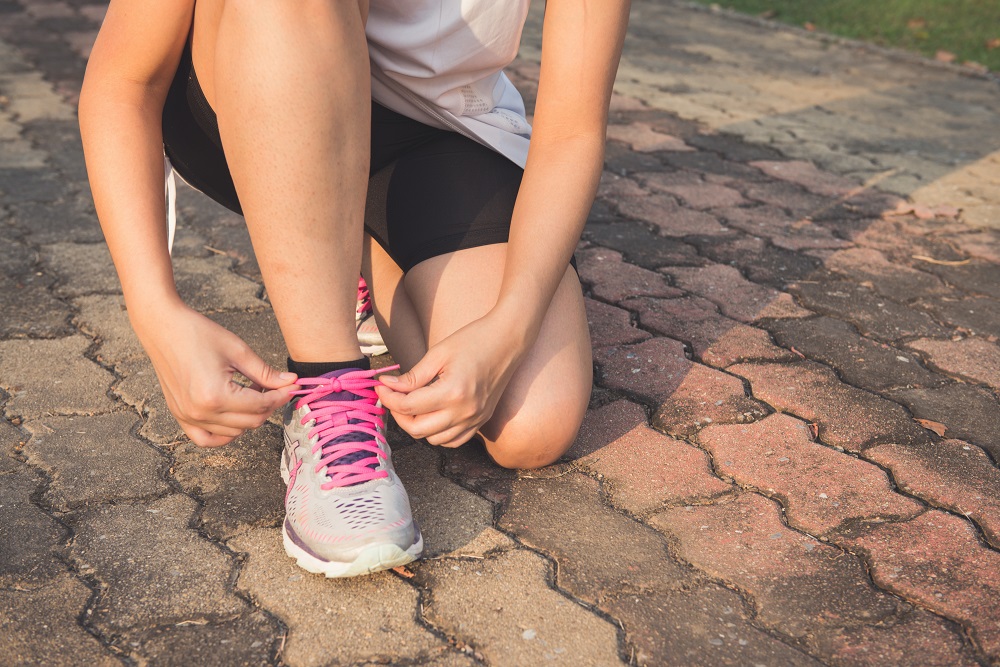Running is one of the most popular forms of exercise, and for good reason. It’s cheap, convenient, and a great way to stay in shape and clear your mind. However, if you’re not careful, running can also lead to a variety of injuries that can put you out of commission for weeks or even months at a time. From shin splints to plantar fasciitis, there are plenty of common running injuries that can be painful and frustrating to deal with. But don’t worry – there are steps you can take to prevent these injuries from happening in the first place. In this blog post, we’ll share some tips on how to avoid the most common running injuries so you can keep pounding the pavement without any setbacks!
Shin Splints
Shin splints, also known as medial tibial stress syndrome, is a common injury experienced by runners. It causes pain along the shinbone and can be quite debilitating if not properly treated.
The most common cause of shin splints is overuse of the muscles in the lower leg. This can happen when you increase your mileage too quickly or change your running surface without proper transition. Improper footwear can also contribute to this injury.
To prevent shin splints, it’s important to gradually increase your mileage and intensity levels while giving your body enough time to adjust. Strengthening exercises for the lower legs can help prevent future occurrences as well.
If you do experience shin splints, it’s important to rest and allow your body time to heal. Ice packs and anti-inflammatory medication may also help alleviate symptoms. In severe cases, physical therapy or other medical treatment may be necessary.
Remember that prevention is key when it comes to injuries like shin splints. Take care of yourself by following proper training guidelines and wearing appropriate footwear during your runs!
Iliotibial Band Syndrome (ITBS)
Iliotibial Band Syndrome (ITBS) is a common running injury that occurs when the iliotibial band, a thick band of connective tissue that runs along the outside of your thigh from your hip to your knee, becomes inflamed or tight. This can cause pain on the outer part of the knee and can make it difficult to run.
One of the main causes of ITBS is overuse. Running long distances without proper rest and recovery time can put too much strain on your iliotibial band, causing it to become irritated. Other contributing factors include poor running form, muscle imbalances in the hips and legs, and inadequate warm-up or cool-down routines.
To prevent ITBS, it’s important to gradually increase mileage rather than suddenly increasing distance. You should also incorporate strength training exercises for your hips and glutes into your workout routine to improve stability and reduce stress on the iliotibial band.
If you do experience pain or discomfort in your knees while running, be sure to take a break from high-impact activities until you’re fully healed. You may also want to consider consulting with a physical therapist who can provide specific exercises targeted at improving flexibility and reducing inflammation in the iliotibial band.
By taking steps to prevent ITBS before it occurs, you’ll be able to continue enjoying all of the benefits that running has to offer without being sidelined by injury.
Patellofemoral Pain Syndrome (PFPS)
Patellofemoral Pain Syndrome (PFPS) is also known as runner’s knee. This injury occurs when the patella, or kneecap, doesn’t move smoothly along the groove in the femur bone during running. The friction between these two bones causes pain and discomfort in the front of your knee.
There are several reasons why PFPS happens, including overuse of the knee joint due to repetitive movements like running on hard surfaces or uphill/downhill terrain. Weak thigh muscles that cannot support your body weight during physical activity can also lead to this condition.
To prevent PFPS from occurring, it’s important to strengthen your quadriceps muscle group through exercises such as lunges and squats. Using proper form while running can also help reduce strain on your knees. Wearing shoes with good arch support and shock absorption can provide additional protection for your joints.
If you experience pain or discomfort in your knees while running, it’s important to take a break from physical activity and consult a medical professional for an accurate diagnosis and treatment plan specific to your needs.
Achilles Tendonitis
Achilles tendonitis is a common injury among runners, which causes pain in the back of the heel. This injury occurs when the Achilles tendon gets overused or overstretched, leading to tear and inflammation.
One of the most common reasons for developing Achilles tendonitis is increasing running mileage too quickly. Runners should never increase their mileage by more than 10% per week as it can cause stress on their tendons.
Another factor that contributes to this type of injury is wearing improper footwear. Worn-out shoes or those without proper support can put additional strain on your Achilles tendon, causing damage over time.
It’s important to stretch properly before and after each run to keep your muscles limber and prevent injuries like Achilles tendonitis. Focus on stretching your calf muscles as tight calf muscles can lead to an increased risk of this injury.
If you feel any discomfort while running, stop immediately and rest until you recover fully from your symptoms. Continuing to push through pain will only make things worse in the long run.
Preventing Achilles tendonitis requires taking care of yourself both physically and mentally so be sure not to neglect either one during training!
Plantar Fasciitis
Plantar Fasciitis is a common injury that affects runners and athletes alike. It causes pain in the heel or arch of the foot due to inflammation of the plantar fascia, a thick band of tissue that runs from the heel bone to the toes.
The most common cause of Plantar Fasciitis is overuse, which puts strain on the plantar fascia and leads to small tears in the tissue. Other factors such as improper footwear, flat feet, high arches, and tight calf muscles can also contribute to this condition.
Symptoms include pain and stiffness in the affected area, especially after long periods of sitting or standing. The pain may subside with activity but return once you stop moving.
Treatment options for Plantar Fasciitis include rest, ice therapy, stretching exercises for your calves and feet, wearing proper shoes with good arch support or using orthotics if necessary. In some cases physical therapy or corticosteroid injections may be required.
To prevent Plantar Fasciitis it’s important to wear properly fitting shoes with adequate cushioning and arch support when running or participating in sports activities. Avoid running on hard surfaces like concrete for extended periods without proper footwear as well as sudden increases in training intensity.
If you experience any symptoms related to Plantar Fasciitis it’s best to seek medical attention early on before it worsens into a chronic condition affecting daily life activities like walking comfortably
How to prevent running injuries
Preventing running injuries is important to ensure that you can continue enjoying the benefits of running without interruption. Here are some tips to help prevent common running injuries.
Firstly, make sure you have proper footwear with good cushioning and support for your feet. This will help absorb impact and reduce stress on your joints.
Secondly, warm up before each run by doing dynamic stretches such as leg swings or lunges. Dynamic stretching has been shown to be more effective than static stretching in reducing injury risk.
Thirdly, gradually increase your mileage and intensity rather than trying to do too much too soon. This gives your body time to adapt and build strength at a safe pace.
Fourthly, cross-train regularly with low-impact activities such as swimming or cycling to give your joints a break from the repetitive impact of running.
Listen to your body – if you experience any pain or discomfort during a run, stop immediately and rest until it subsides. Don’t push through the pain as this can lead to further injury.
By following these guidelines, you’ll be able to prevent many of the most common running injuries and stay healthy while pursuing this great form of exercise!
Conclusion
Running is a great way to stay fit and healthy, but it can be challenging when injuries occur. While it’s impossible to completely avoid getting injured, there are steps you can take to prevent common running injuries.
By following the tips outlined in this article such as gradually increasing your mileage, wearing proper shoes, stretching before and after your runs, cross-training and listening to your body when it tells you to rest or slow down; you’ll be less likely to experience any of these common running injuries.
Remember that prevention is key when it comes to staying injury-free while enjoying the sport of running. So take care of yourself by implementing these prevention strategies into your routine and enjoy all the benefits that come with being an active runner!








